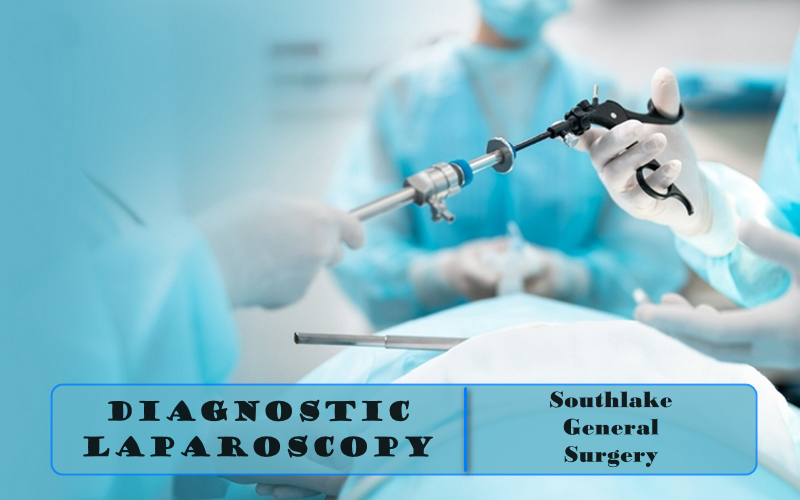Laparoscopy is a surgical procedure that uses the specialized surgical tools for operation. A General Surgeon uses a small cylindrical tube with a mini camera on top called a laparoscope that is inserted in the body through small incisions. This helps the surgeon to look inside your body on a monitor screen. This procedure is also known as Key-Hole surgery, which refers to minimally invasive surgical technique.
Initially, it was used to treat gallbladder and gynecology operation later it is also used for the liver, intestines, and other organs surgery.
How laparoscopic surgery is performed?
Earlier surgeons used to perform surgeries through an open surgical procedure, wherein, 6-12 inches of one large incision were made, to create a space to perform the surgery and treat the ailment. This procedure takes longer to heal the wound and mainly patient must stay in the hospital for a couple for days after surgery.
In laparoscopic surgery, a surgeon makes few small incisions close to the affected area on the body which is not more than half an inch long to insert a tube called a laparoscope and other surgical instruments. After completion of the surgery, the surgeon closes the incisions with a suture. In this surgery, post-examination of medical fitness patient can be discharged from the hospital after 24hours.
Both surgeries require general anesthesia.
What are the advantages of Laparoscopic Surgery?
Laparoscopic surgery has many advantages compared with conventional or open surgery. This includes
- Less or small Scars after surgery
- Faster recovery and less pain
- Short Hospital Stay
- Individuals can resume their regular activities after 1-2 weeks
In conventional or open surgery, if a patient had intestines surgery, it is recommended to stay a week or more in the hospital after open surgery and complete recovery will take about 4-8 weeks. Through Laparoscopic surgery, an individual might stay for 2days after surgery and recuperate in 2 or 3 weeks.
For what reason is laparoscopy performed?
To recognize and analyze the source of pelvic or stomach pain doctor uses laparoscopy. It is recommended when non-invasive procedures can’t assist with diagnosis.
In certain conditions like abdominal issues can also be diagnosed with imaging methods for example Ultrasound, CT Scan, and MRI scan.
The doctor recommends having a laparoscopy if these test results don’t give ample information or clarity on the diagnosis. Laparoscopy is also used to collect biopsy or tissue samples from a specific organ in the abdomen.
Laparoscopy is advised by the doctor to inspect the following organs:
- gallbladder
- Pancreas
- Small and large intestines (colon)
- Liver
- Reproductive organs or pelvic
- Abdomen
- spleen
- Appendix
After examining these areas with the help of a laparoscope, the doctor can identify:
- abdominal mass or cancer
- Ascites refers to abdominal fluid
- Liver disease
- the effectiveness of certain treatments
- the viability of specific treatments
What is advance laparoscopic surgery?
In few surgeries, the surgeon inserts the laparoscope and the surgical instruments into the same incision, this implies less scaring. However, this procedure is complicated for surgeons because surgical tools are quite close to each other.
In some cases, the doctor may choose to use an instrument that allows them to extend with a hand. This is also known as “hand-assisted” laparoscope. In this situation, the surgeon has to make an incision which slightly bigger than a half-inch, yet it actually can be more modest than in conventional surgery. This has made it conceivable to utilize laparoscopic surgery for the liver and other body organs.
What are the outcomes of laparoscopy?
If laparoscopy is used to take a biopsy, a pathologist will analyze it. Post examination a detailed report will be shared with the doctor.
General outcomes from laparoscopy demonstrate the shortfall of stomach bleeding, hernias, and intestinal blockages. They additionally imply that each one of your organs are sound and healthy.
Unusual outcomes from laparoscopy show certain results, including:
- surgical scars
- cancer, cysts or tumor
- hernia
- cholecystitis, an inflammation of the gallbladder
- an infection of the reproductive organs also known as a pelvic inflammatory disease
- An inflammation of the intestines, also known as appendicitis
- trauma or injury to a specific organ
- fibroids, or strange developments in the uterus
- endometriosis, a problem where the tissue that shapes the lining of the uterus develops outside the uterus
Your primary care physician will plan an appointment with you to go over the outcomes. If a severe ailment was discovered, your PCP will talk about proper treatment choices with you and work with you to concoct an arrangement for tending to that condition.
For more information on diagnostic laparoscopy at southlake general surgery, Texas with procedure, treatment and consultation. Please connect with our healthcare expert today at +1 (817) 748-0200. Click here to make an online appointment with us.

